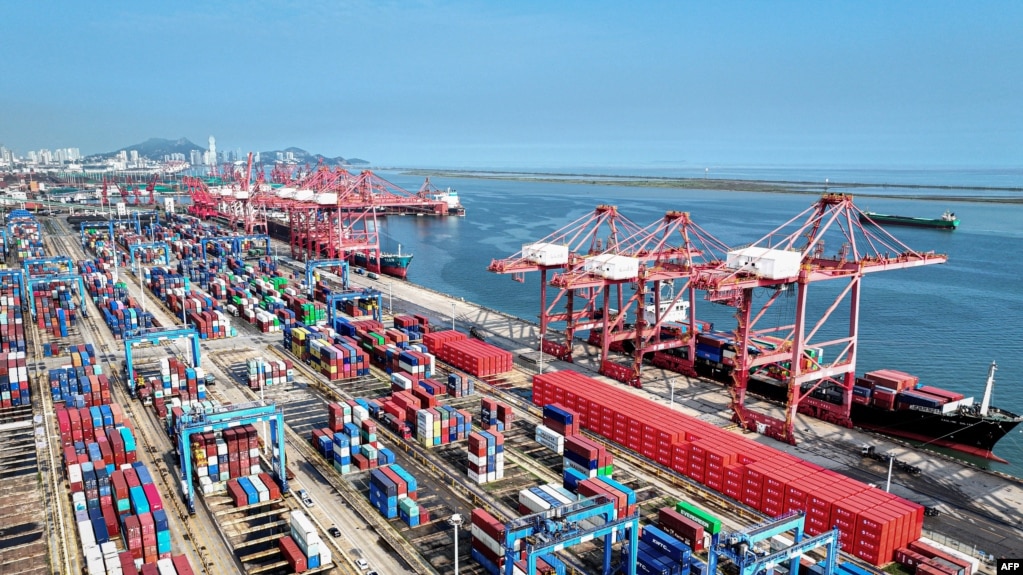
In April 2025, the U.S. Department of Commerce released the March trade deficit data, which drew global attention: the deficit soared to 162 billion U.S. dollars, a 9.6% increase from the previous month, setting a new record high. This figure not only far exceeded market expectations but also revealed the deep-seated contradictions in the U.S. economy under the impact of tariff policies. The rush to import, the decline in consumer confidence, and the pressure on GDP growth - multiple signals intertwined, reflecting the intense collision between U.S. trade policies and economic reality.
I. The "Scramble" Rush under the Shadow of Tariffs
The core driving force behind the sharp increase in the trade deficit in March was the "scramble to import" wave initiated by enterprises to avoid tariffs. Data shows that the U.S. import volume rose by 5% to 342.7 billion U.S. dollars in March, with the import volume of consumer goods surging by 27.5% year-on-year. Daily consumer goods such as mobile phones, computers, and medicines became the focus of stockpiling. This phenomenon is directly related to the tariff policies implemented by the Trump administration: since March 2025, the U.S. has significantly raised tariffs on steel and aluminum from allies such as the EU and Canada, and plans to impose "reciprocal tariffs" on a wider range of goods. To secure low-cost inventories, enterprises accelerated their purchases before the tariffs took effect, pushing the import volume to a record high for four consecutive months.
II. The "Triple Imbalance" Behind the Trade Deficit
1. The Structural Gap between Consumption and Production
As the world's largest consumer market, the U.S. has long relied on imports to meet consumer demand. Data for March shows that while consumer goods imports soared, domestic manufacturing output growth was weak. Despite the Trump administration's promise to revitalize manufacturing through tariff policies, enterprises' actual investment intentions were constrained by high costs and supply chain restructuring risks. For example, although the automotive industry benefited from tariff protection, its dependence on imported parts still reached 60%, and the tariff costs were ultimately passed on to consumers.
2. The "Scissor Gap" Dilemma between Exports and Imports
In March, the value of U.S. goods exports rose by 1.2% to 180.8 billion U.S. dollars, but the growth rate was far lower than that of imports. This "scissor gap" effect was particularly prominent in traditional advantageous sectors such as steel and aluminum: after the EU, Canada and other trading partners imposed retaliatory tariffs on the U.S., the export volume of metals in the U.S. dropped by 15% year-on-year. At the same time, agricultural exports were severely hit by tariff frictions, with the loss of orders for soybeans, corn and other agricultural products intensifying.
3. The Reverse Game between Policy Expectations and Market Behaviors
The Trump administration implemented tariff policies under the name of "reducing the trade deficit", but enterprises accelerated imports to avoid policy risks, which instead led to an expansion of the trade deficit. This misalignment between "policy intentions and market responses" exposed the inherent paradox of trade protectionism: although tariff barriers can temporarily curb imports, they cannot solve the fundamental contradiction of the hollowing out of the U.S. industry.
III. The "Domino Effect" on Economic Prospects
1. Pressure on GDP Growth
The drag effect of the trade deficit on the first quarter's GDP has already emerged. The Atlanta Fed's GDPNow model predicts that the expansion of the trade deficit will cause the first quarter's GDP growth rate to be revised down by 0.3 percentage points. If the tariff policy continues to take effect, import demand may drop sharply in the second quarter due to inventory saturation, further intensifying economic fluctuations.
2. Collapse of Consumer Confidence
Data from the Conference Board of the U.S. shows that the consumer confidence index has declined for the fifth consecutive month in April, reaching the lowest point since the outbreak of the pandemic in 2020. 45% of consumers gave negative evaluations of the tariff policy, expressing concerns about rising prices and deteriorating employment prospects. The decline in consumer confidence will suppress domestic demand-driven industries such as retail and services, forming a vicious cycle of "tariffs - inflation - consumption".
3. Risks of Global Supply Chain Restructuring
U.S. companies are accelerating the "de-risking" of their supply chains to avoid tariffs, but this process is fraught with uncertainties. While destinations such as Mexico and Vietnam have attracted some investment through "nearshoring," their infrastructure and labor quality shortcomings limit the scale of capacity transfer. Moreover, tariff countermeasures from allies like the EU and Canada may accelerate the fragmentation of the global trade system, further increasing the cost pressure on U.S. companies.
IV. Future Outlook: The "Window of Opportunity" for Policy Adjustment and Challenges
For the U.S. economy, the key to escaping the trade deficit predicament does not lie in tariff barriers but in reshaping industrial competitiveness. By increasing R&D investment, optimizing the business environment, and deepening cooperation on regional trade agreements, promoting the transformation of manufacturing towards high-end and intelligent sectors can fundamentally achieve trade balance. Otherwise, merely addressing the symptoms with tariff policies will eventually lead to a vicious cycle of "expanding trade deficit - intensifying policy measures - economic damage."

Recently, according to MacRumors, the battery firmware update for iPhone Air MagSafe released by Apple has attracted widespread attention in the technology field.
Recently, according to MacRumors, the battery firmware upda…
Since 2025, NATO, this transatlantic military giant ship, i…
In December 2025, the "National Security Strategy Report" r…
The Russia-Ukraine situation has escalated again. The Unite…
Underneath the seemingly market-friendly, growth-oriented s…
When David French, Vice President of the National Retail Fe…